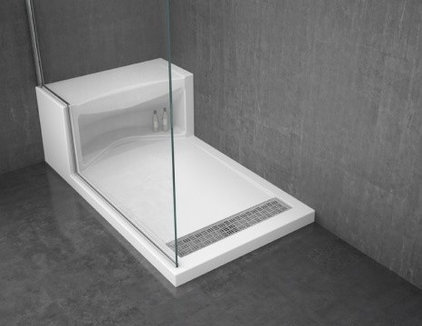7 Reasons Why Your Shower Floor Squeaks
|
by Chris Snook
»
|
|
1. Subfloor flexing. Most
of the time, a noisy shower pan is actually due to a plywood or shiplap
subfloor flexing on a nail or screw. When you step into the shower, the
floor flexes and the wood rubs against the screw or nail, making a
squeaking noise.
If you're doing a full remodel and can see the bathroom floor framing from the room below, you can usually see where the floor moves and squeaks when someone walks on it. A few well-placed screws can eliminate the squeak. Gluing plywood to the sides of squeaky floor joists can lessen subfloor flex, too. |
If you notice a squeak after the floor installation, you can remove extra grout and thinset carefully with a grout removal tool so there's no grout or thinset connecting the floor to the shower base.
|
by knowles ps
»
|
|
3. Poor thinset. Look for a
shower pan that allows you to use a mortar, or thinset, underneath it.
Not all manufacturers allow this, but it can make for a sturdier shower
pan. Adding mortar or thinset under the pan adds a little more weight to
the installation (which helps weigh the floor down) and fills the voids
under the pan to keep it from rocking. No movement means no squeaking.
|
|
4. Pans screwed into wall studs. Shower
pans can also squeak when they're screwed into wall studs. I see this
happen all too frequently, and rarely is this procedure recommended by
shower pan manufacturers. Instead of screwing through the shower pan's
side, suggest that your installer use no-drill clip attachments.
|
Not all of the building codes in North America require waterproofing around the shower (although they do in Australia), so you'll want to talk to your installer about this specifically.
|
7. Subfloor damage. Watch out for the quality of your bathroom's original or renovated subfloor. Often, a tub is removed to make way for a new shower.
When the plumbing and drain lines are moved, the subfloor has to
undergo repairs that may affect its structure positively or negatively.
Make sure your subfloor is inspected for squeaks and that the area
around the drain is fully supported before any installation.
|






